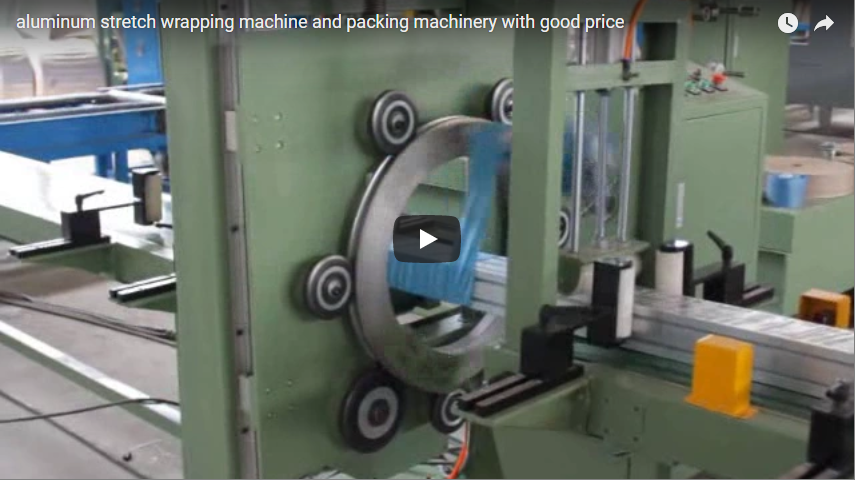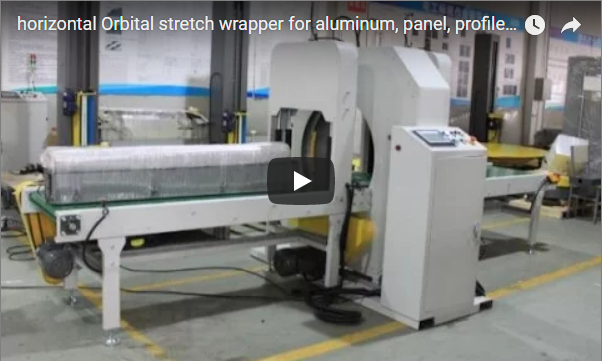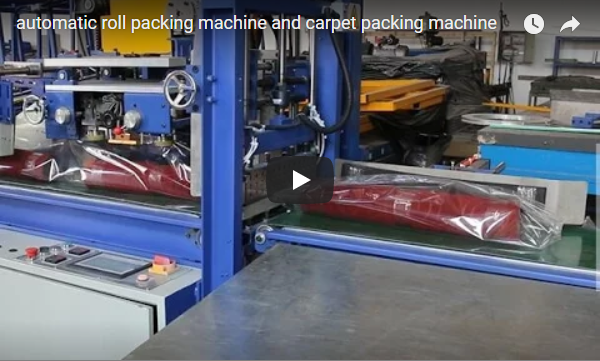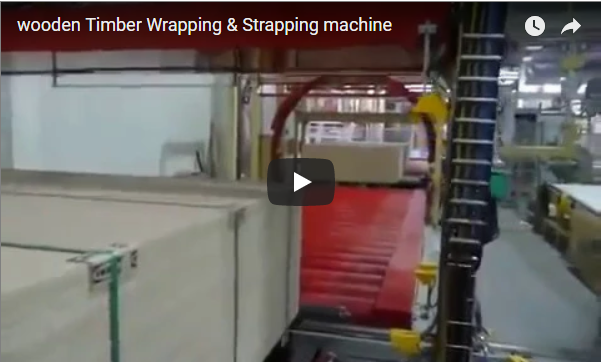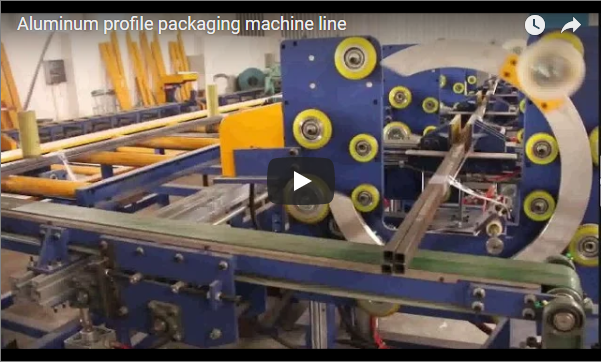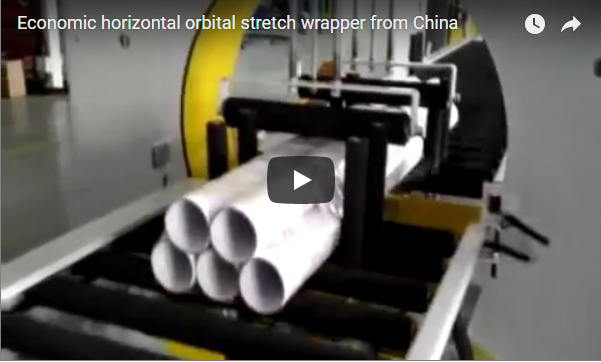Operational Guide: Giant Horizontal Orbital Stretch Wrapper with Film Covering Unit
Handling and securing large, heavy, or awkwardly shaped industrial products like steel coils, pipes, lumber, or assembled machinery for transport presents unique challenges. A giant horizontal orbital stretch wrapping machine equipped with a film covering unit is specifically engineered to address these needs, providing robust protection and stabilization. This guide delves into the operational principles, technical aspects, and practical considerations of these essential packaging systems.
1. Core Functionality and Operating Principles
Unlike turntable wrappers where the load rotates, a horizontal orbital wrapper passes the product horizontally through a rotating ring carrying the stretch film roll.
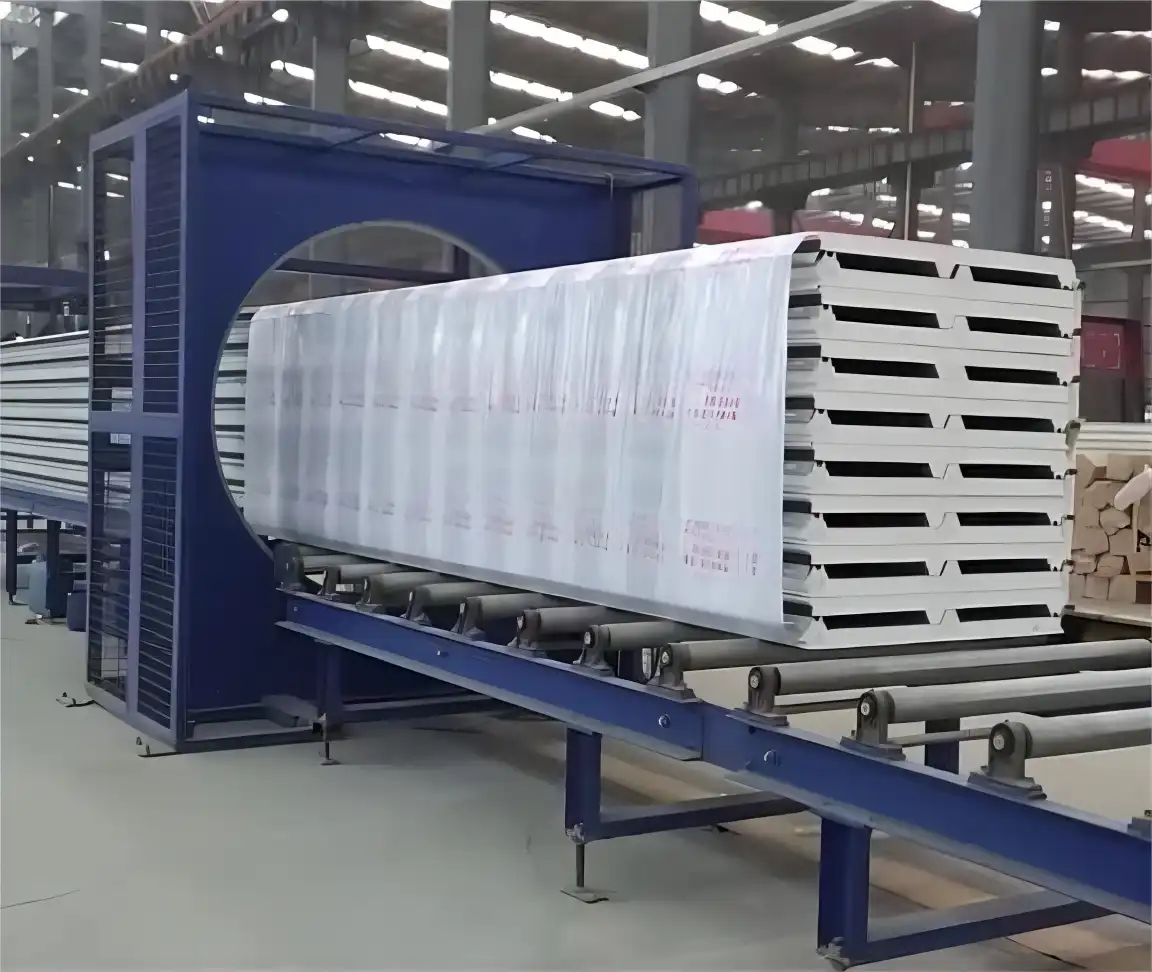
- Product Transport: The item is placed on an integrated conveyor system (often heavy-duty rollers or belts) that feeds it steadily through the machine's wrapping ring aperture.
- Orbital Wrapping: A vertical ring, holding the film carriage assembly, rotates around the product as it moves horizontally. This orbital motion applies the stretch film circumferentially around the load.
- Film Application: The film carriage dispenses the stretch film, typically with a powered pre-stretch mechanism to maximize film yield and enhance load containment force.
- Synchronization: The conveyor speed and ring rotation speed are precisely synchronized (usually via PLC control) to ensure a consistent overlap and wrap pattern along the entire length of the product.
2. Key Components Breakdown
Understanding the main components helps in operation and maintenance:
- Infeed/Outfeed Conveyors: Heavy-duty roller or belt conveyors designed to support and transport substantial loads smoothly into and out of the wrapping zone.
- Rotating Ring Assembly: The core wrapping mechanism, available in various diameters to accommodate different product cross-sections. Houses the film carriage.
- Film Carriage with Pre-stretch: Holds the film roll. Modern systems feature motorized pre-stretch units (often achieving 150% to 300% stretch) that elongate the film before application, increasing tensile strength and reducing material consumption. Film tension control is critical.
- Film Cutting and Clamping System: Automatically clamps the film to start the cycle, cuts the film upon completion, and often wipes it against the load to secure the tail.
- Film Covering Unit: An auxiliary system, typically positioned before or after the main wrapping ring. It dispenses a separate layer of film (often PE film) across the top surface of the product before or after the primary stretch wrapping.
- Control Panel (HMI): A Human-Machine Interface, usually a touchscreen, allowing operators to set parameters (wrap counts, overlap, tension, conveyor/ring speeds), store product recipes, run diagnostics, and monitor the process. Controlled by a PLC (Programmable Logic Controller).
3. The Role of the Film Covering Unit
The addition of a film covering unit significantly enhances product protection:
- Environmental Shielding: It provides a barrier against dust, dirt, moisture, and UV radiation, particularly crucial for products stored outdoors or transported on flatbed trucks.
- Full Enclosure: When combined with the orbital stretch wrap, it creates a near-complete enclosure of the product (often 5 or 6 sides depending on configuration and film overlap).
- Application: Typically involves dispensing a flat sheet of film from a separate roll, cutting it to length, and laying it over the top of the product as it passes underneath. Subsequent orbital wrapping can help secure this top sheet.
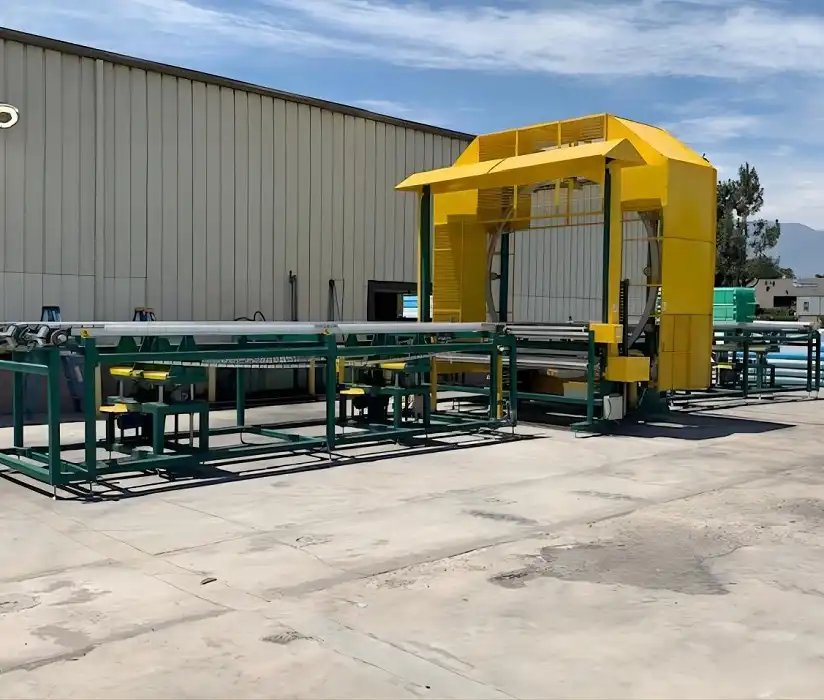
4. Technical Specifications to Consider
When evaluating or operating these machines, key parameters include:
- Maximum Product Dimensions (L x W x H): Defines the largest item the machine can process. Crucial for matching machine capacity to product range. (e.g., lengths > 6m, cross-sections up to 2500mm x 2500mm are common for "giant" models).
- Maximum Product Weight: Conveyor and frame capacity (e.g., 3000kg, 5000kg, or significantly more).
- Ring Rotation Speed: Affects throughput, typically adjustable (e.g., 15 - 40 RPM).
- Conveyor Speed: Adjustable to control film overlap (e.g., 5 - 15 m/min).
- Film Type: Usually LLDPE (Linear Low-Density Polyethylene) stretch film. Specifications include width (e.g., 500mm, 750mm), thickness (gauge), and roll diameter/core size.
- Film Pre-stretch Ratio: Motorized system capability (e.g., up to 300%).
- Film Cover Unit Specs: Max film width and roll diameter compatibility.
- Power Requirements: Voltage, phase, and power consumption (e.g., 480V/3Ph/60Hz).
- Control System: PLC brand (e.g., Siemens, Allen-Bradley), HMI type and size.
5. Integrating PLC Control and Automation
The PLC is the brain of the operation, enabling:
- Customizable Wrap Programs: Saving specific parameters (rotation speed, conveyor speed, number of wraps at ends, tension settings) as recipes for different products.
- Automation: Seamless integration into automated production lines, receiving products from upstream processes and feeding them downstream.
- Diagnostics & Troubleshooting: HMIs often display error messages and sensor status, simplifying troubleshooting.
- Safety Interlocks: Integration with light curtains, emergency stops, and safety fencing is standard.
- Data Logging: Potential for recording cycle counts, film usage, and fault history.
6. Practical Considerations and Experience Sharing
Optimizing performance and longevity involves several practical aspects:
- Film Selection: Use high-quality stretch film appropriate for the load weight, shape, and required containment force. Punctures or irregularities can cause film breaks.
- Tension and Pre-stretch Settings: Finding the right balance is key. Too little tension leads to loose loads; too much can damage softer products or waste film. Pre-stretch maximizes efficiency but requires compatible film. Regular checks and adjustments are needed.
- Maintenance: Adhere to the manufacturer's recommended maintenance schedule. Key areas include:
- Cleaning sensors and rollers.
- Lubricating bearings and moving parts.
- Inspecting belts and chains for wear.
- Checking and sharpening/replacing film cutter blades.
- Verifying safety interlocks function correctly.
- Operator Training: Ensure operators are trained on safe operation, parameter setting, film loading, basic troubleshooting, and emergency procedures.
7. Benefits Beyond Basic Protection
Investing in a giant horizontal orbital wrapper offers significant advantages:
- Superior Load Stabilization: Tightly wraps products, preventing shifting during handling and transit, reducing damage claims.
- Enhanced Protection: Shields from environmental factors (dust, moisture, UV - especially with top cover), scratches, and minor impacts.
- Material Efficiency: Powered pre-stretch significantly reduces the amount of film consumed compared to manual or lower-spec machines.
- Labor Reduction: Automates a physically demanding and time-consuming process, freeing up personnel for other tasks.
- Improved Throughput: Wraps large items much faster and more consistently than manual methods.
- Professional Package Appearance: Creates a clean, uniform package, enhancing brand perception.
8. Selecting the Right Machine
Choosing the appropriate machine depends on:
- Product Characteristics: The range of sizes, weights LWH, and shapes of products to be wrapped.
- Throughput Requirements: The number of products needing wrapping per hour or shift.
- Operating Environment: Space availability, potential exposure to harsh conditions.
- Level of Automation: Standalone operation versus integration into a fully automated line.
- Budget: Initial purchase price plus ongoing operational and maintenance costs.
- Specific Features: Necessity of the film covering unit, specific control requirements, heavy-duty construction needs. Consulting with manufacturers and potentially seeking guidance from industry resources like PMMI (https://www.pmmi.org) can aid in making an informed decision.
Conclusion
Giant horizontal orbital stretch wrappers with integrated film covering units are powerful tools in industrial packaging. They provide essential protection and stabilization for large and challenging loads, ensuring products arrive at their destination securely and in good condition. By understanding their operation, key components, and incorporating best practices for use and maintenance, facilities can maximize the efficiency, safety, and cost-effectiveness of their packaging operations.

